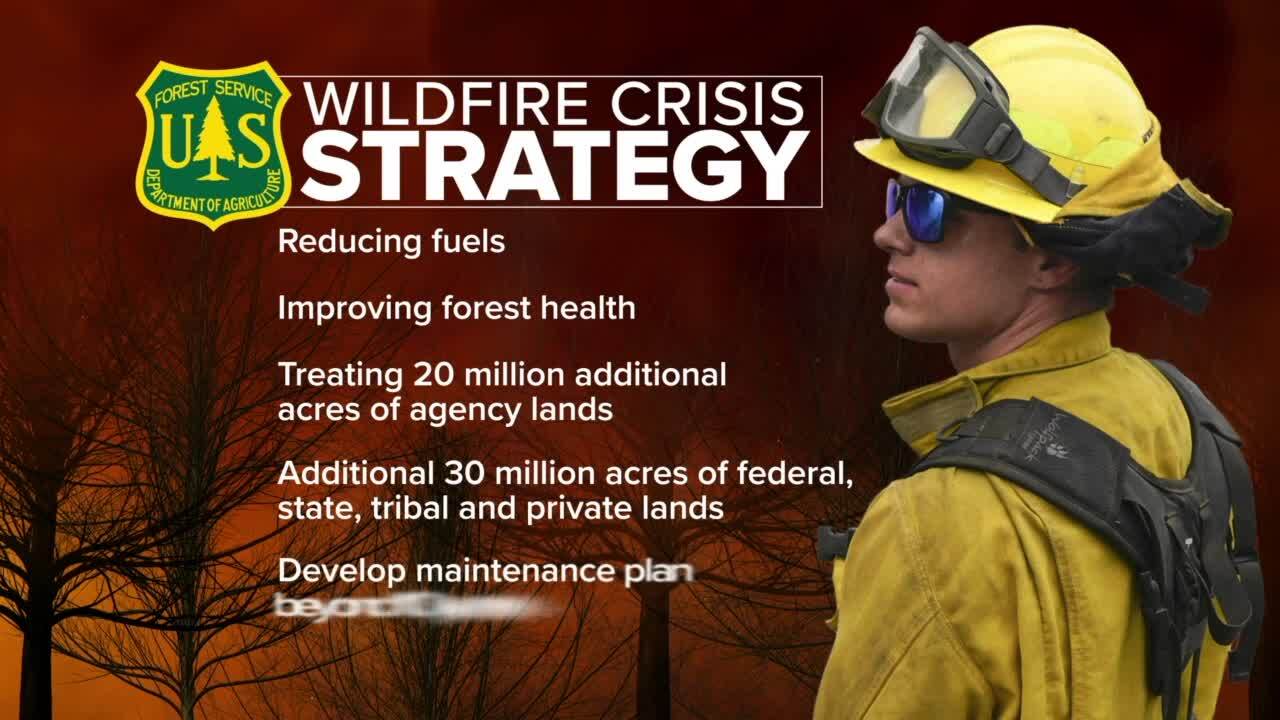MISSOULA – US Forest Service (USFS) leaders have an outline of how to tackle the problem of forest management and wildfire safety in a changing climate. But they say it will take science and strong partnerships to make the strategy work.
While communities like Missoula County are already well into plans to reduce wildfire risk there's still lots of work to do for the largest neighbor — the US Forest Service, which manages 25-million acres in the Northern Region alone.
That's where the USFS’s new 10-year objective known called "Confronting the Wildfire Crisis: A Strategy for Protecting Communities and Improving Resilience in America's Forests" comes into the picture.
"We have to look at this as a holistic issue and problem. So, the strategy is around 50 million acres, 20 million on federal land, but another 30 million on all the other ownerships. So, we can look at the whole picture and treat it,” said USFS Northern Region Regional Forester Leanne Marten.

That's nationwide, but with an emphasis on the extensive holdings here in the West, where fires are burning hotter, and longer -- weeks and even months outside past fire seasons. Marten says the increased risk didn't happen "overnight" and won't be solved without a long-term approach.
"And it's really meant to have that long-term strategy of putting things in place, getting some resources built up with our partners with other agencies, Tribes, the local county commissioners, within our own agency,” Marten said. “And the long-term maintenance because it's not a one-time only we have to have that long term maintenance. So, it's really over the next 10 years and then long-term. How are we going to manage it?"
The agency envisions using tools from prescribed burns to logging and thinning and helping community safety planning. Environmental groups are already concerned. But Marten clarifies the strategy isn't a swing to the past, or the mythical "let it burn" stigma popularized in the 80s and 90s.
"We've never had a 'let it burn'. We never will. From that standpoint, we manage all fires depending on resources, availability, weather, topography, those type of factors, and really the strategy is the upstream being proactive,” explained Marten. “Trying to really manage the force so they can be resilient."

"We're working really hard with our research partners at the universities, at the Rocky Mountain Research Station within the agency and others on really formulating the strategy around sound science."
While other agencies will be key in developing the strategy, Marten told MTN News she's looking forward to including private landowners.
"They are right there at the table with us, and they need to help us help them because we don't know. But they know what they need on their land, so it's working with the private landowners and everybody around the communities. We need to be in it together and that's what I really look forward to, 'cause we've been doing that in Montana. We have an opportunity to even do more of that."
"I see it as enhancing the great work we've been doing across the Northern Region and the real key is with our partners. We've been doing it in shared stewardship. We've been working with other partners,” Marten continued. “We've been working with the Tribes, so really keep them focused on doing it together, enhancing that, and hopefully bringing some other resources to help us do it."






